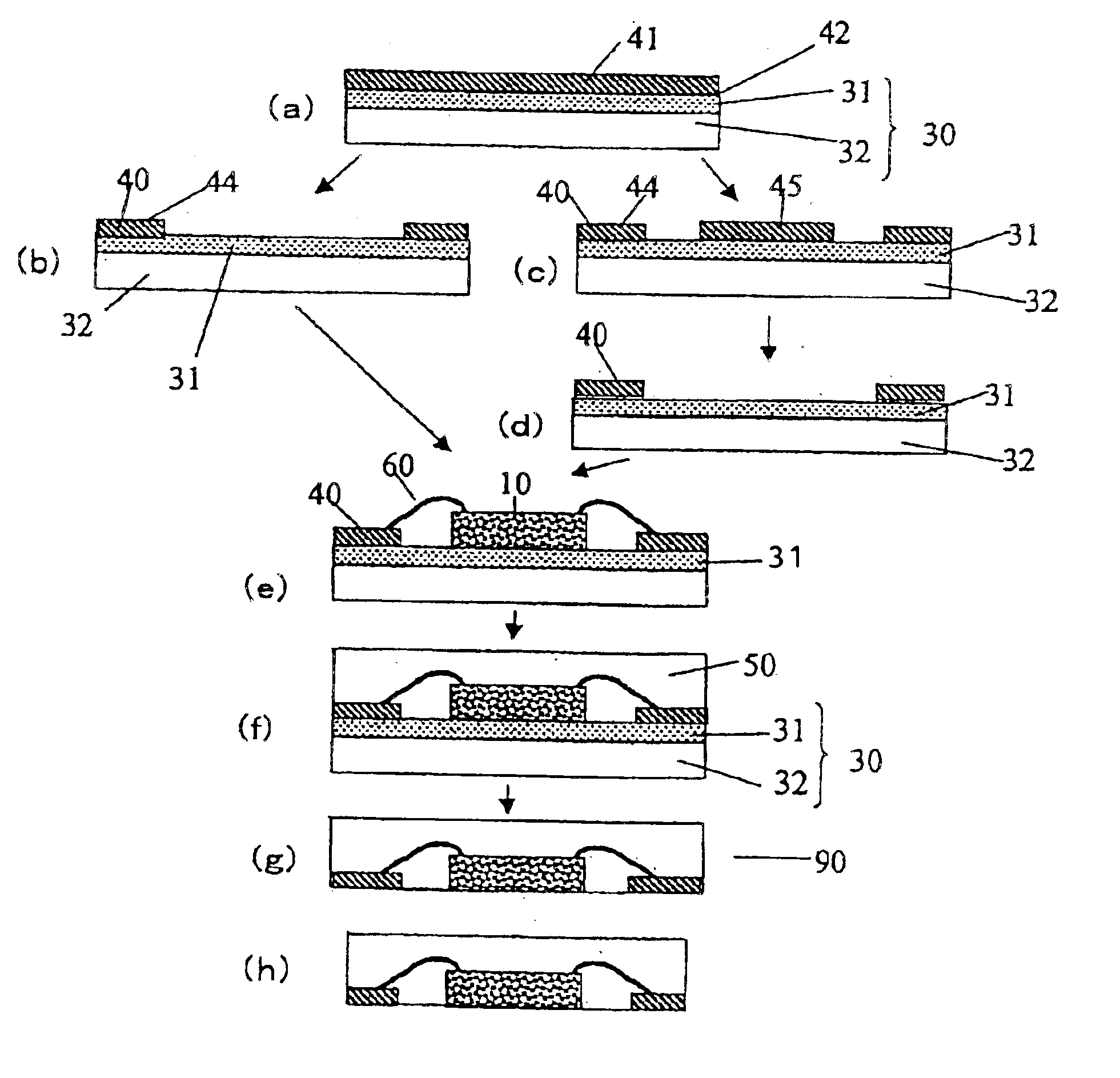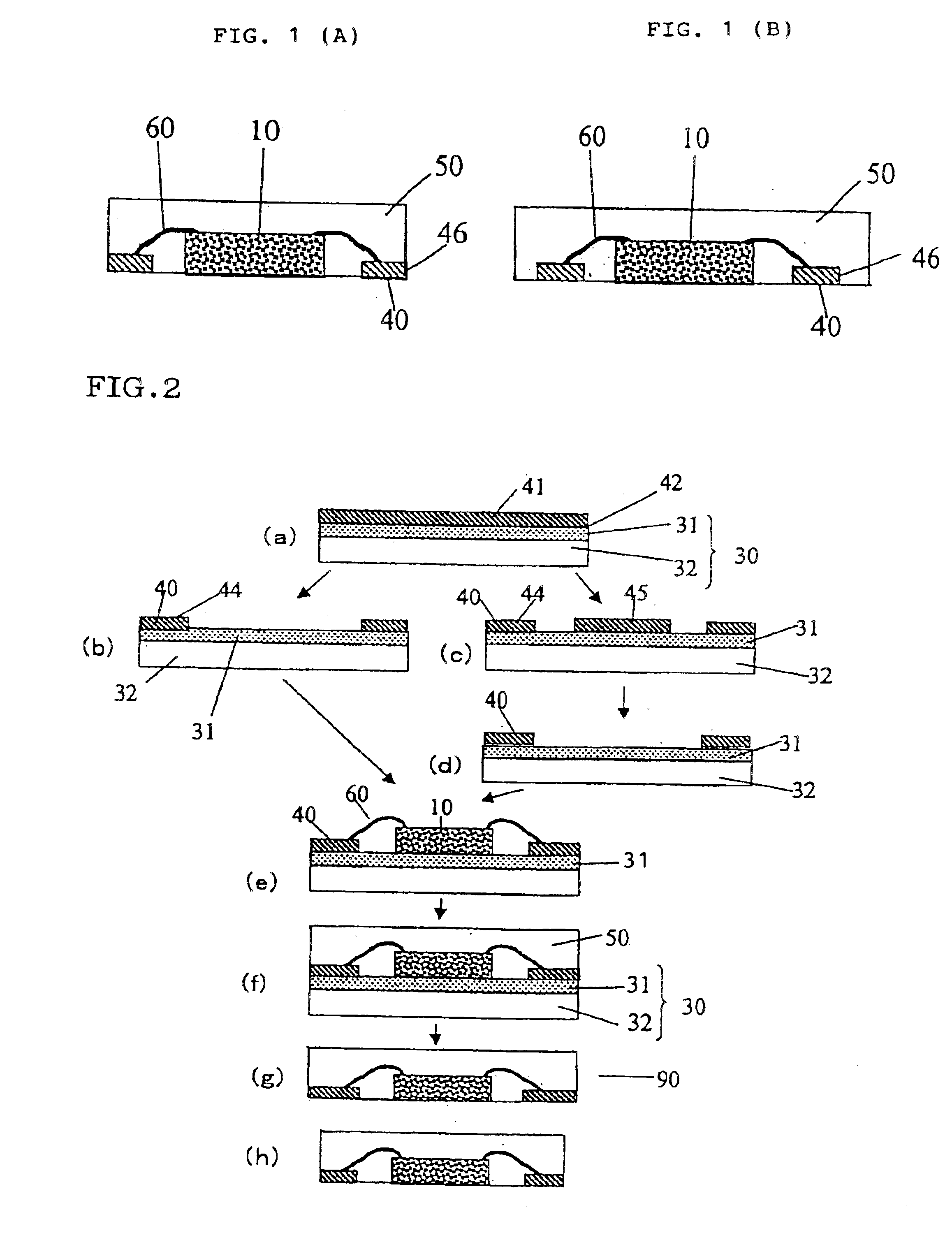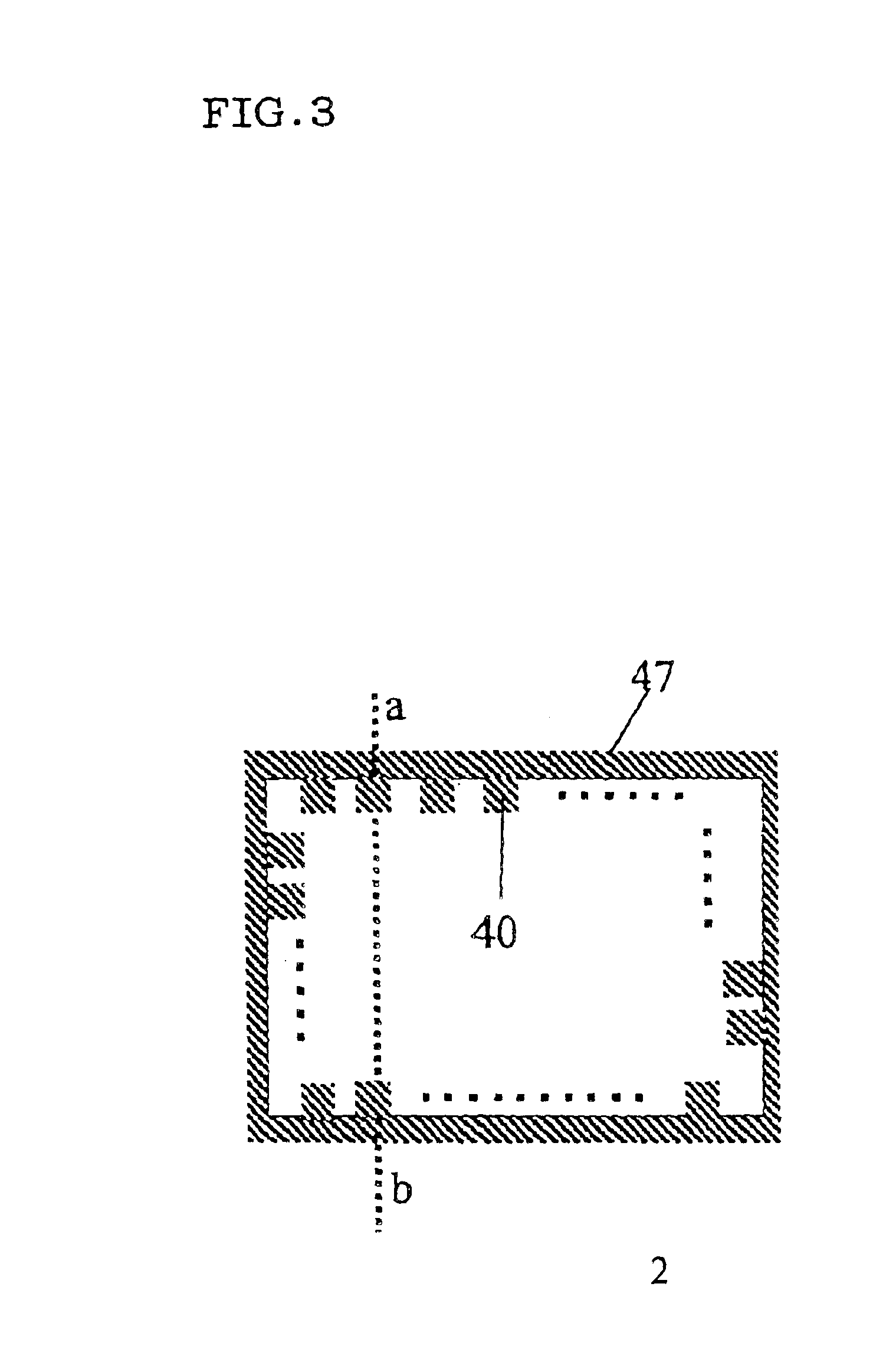Method for manufacturing semiconductor device, adhesive sheet for use therein and semiconductor device
- Summary
- Abstract
- Description
- Claims
- Application Information
AI Technical Summary
Benefits of technology
Problems solved by technology
Method used
Image
Examples
example 1
Production of Adhesive Sheet
A silicone-based adhesive (SD-4587L, Toray Dow Corning Co., Ltd.) was applied onto a polyimide film with a thickness of 25 μm and a width of 500 mm (Kapton®H, Du Pont-Toray Co., Ltd.) and then dried at 150° C. for 3 minutes to form an adhesive sheet having an adhesive layer with a thickness of 5 μm. The adhesive layer of the adhesive sheet had an elastic modulus of 0.15 MPa at 150° C. and an adhesive strength of 0.25 N / 10 mm to a silicon mirror wafer. The polyimide film used as the base layer had an elastic modulus of 1.8 GPa at 150° C.
Fabrication of Semiconductor Device
A copper metal foil with a thickness of 35 μm (BHY-138T, Japan Energy Corporation) was attached to the adhesive layer of the adhesive sheet to form a flexible metal-attached adhesive sheet. After pattern etching, one block corresponding to each block 80 (with a W1 of 500 mm) as shown in FIG. 5 had an arrangement of the electrically conductive parts 40 as shown in FIG. 7. Referring to FIG. ...
example 2
The process of Example 1 was used to form semiconductor devices except that the metal foil used was a copper-nickel alloy foil with a thickness of 18 μm (C7025, Japan Energy Corporation). The wire bonding had a 100% success rate. The observation of the inside of the resulting semiconductor devices proved that the y had no deformed wire, no shifted chip, or the like.
Wire Bonding Conditions
Apparatus: UTC-300BI SUPER (Shinkawa Ltd.)Ultrasonic Frequency: 115 kHzUltrasonic Output Time: 15 millisecondsUltrasonic Output Power: 120 mWBond Load: 1.18 NSearch Load: 1.37 N
Transfer Molding ConditionsApparatus: TOWA Molding MachineMolding Temperature: 175° C.Time: 90 secondsClamp Pressure: 200 kNTransfer Speed: 3 mm / secondTransfer Pressure: 5 kN
Elastic Modulus Determining Method
The elastic modulus of the base layer and the adhesive layer were measured under the following conditions:Evaluation System: Rheometrics Viscoelastic Spectrometer (ARES)Temperature Rise Rate: 5° C. / minFrequency: 1 HzMeasu...
PUM
 Login to View More
Login to View More Abstract
Description
Claims
Application Information
 Login to View More
Login to View More - R&D
- Intellectual Property
- Life Sciences
- Materials
- Tech Scout
- Unparalleled Data Quality
- Higher Quality Content
- 60% Fewer Hallucinations
Browse by: Latest US Patents, China's latest patents, Technical Efficacy Thesaurus, Application Domain, Technology Topic, Popular Technical Reports.
© 2025 PatSnap. All rights reserved.Legal|Privacy policy|Modern Slavery Act Transparency Statement|Sitemap|About US| Contact US: help@patsnap.com



